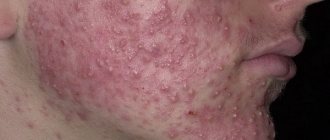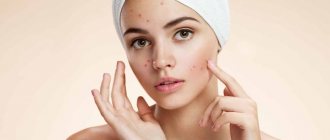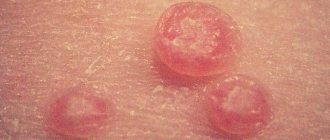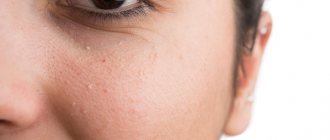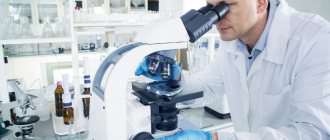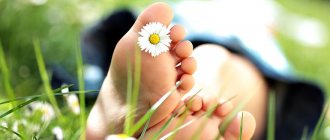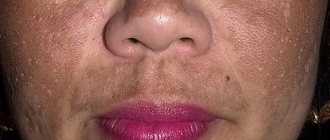Acne is inflammation of the sebaceous glands on the skin in the form of tubercles. For many people they are a real problem. But not everyone knows that there are many types of such inflammations and, accordingly, their treatment methods may differ. Blackheads, pimples, and acne most often appear on the face. These problems are serious and at the first sign it is better to consult a doctor. A dermatologist will help in this matter; he will refer you to the necessary tests and prescribe the correct treatment. Since self-medication leads to worsening acne.
Acne
Acne or acne is a disease of the sebaceous glands of the skin. As it develops, pores expand, oily skin and comedones appear. This occurs due to disruption of the process of exfoliation of dead cells and increased production of sebum. Along with fat, acne propionobacteria enter the cavity of the sebaceous gland.
They are constantly present on the epidermis (in its folds). Microbial activity provokes inflammation and, as a result, increases blood flow. Therefore, swelling and redness appear near the pimple. It is better to treat an already brewing inflammation and not wait until it comes to the surface. This is done precisely, after regular treatment there will be no trace left; an unripe pimple can and should be treated. When colored pimples (blue, green, yellow) appear with acne, this indicates stagnant processes and the addition of a secondary infection. In this case, antibacterial therapy is necessary. Dry pimples can also appear on the face; they are typical for dry skin types. Such formations are much easier to remove than purulent ones, but the wound remains and there is a possibility of infection getting there.
Prevention methods
To make your skin delight you with its smoothness and even complexion, try to follow the following recommendations:
- If your skin is prone to uneven skin, pay special attention to the cleansing step. Use exfoliating gommages and scrubs. But on the contrary, you should avoid alcohol-containing lotions. They dry out the epidermis, causing the sebaceous glands to produce sebum in double volume. This only causes clogged pores.
- Review your diet. If you eat sweets and cakes every day, often have processed dinners and often drink alcoholic beverages, your skin is unlikely to look perfect. Include more greens, vegetables and fruits in your diet, and take a course of multivitamins.
- If possible, avoid bright makeup. Often, subcutaneous comedones are a reaction to the constant use of foundation. Also, the appearance of bumps can be caused by the use of cream eye shadow. Give preference to dry, crumbly options, and instead of foundation, apply mineral powder. It is much more suitable for problem skin.
It is better to use non-comedogenic products for skin care
The structure of a pimple
So where do acne come from? To begin with, we note that the skin consists of 3 layers: epidermis, dermis, hypodermis. Pimple originates in the middle layer - the dermis. At this level, the sebaceous glands malfunction more often, and its root is also located there. Mechanism of abscess development:
- Blockage of the pore (sebaceous gland) with excess sebum, resulting in the formation of a rod;
- Inflammatory process due to blockage, redness;
- Due to the ingress of bacteria, inflammation worsens and, as a result, purulent masses appear;
- The pimple has already festered and is coming to the surface of the skin.
The contents of a pimple are sebum and dead cells. This mixture gets into the pore and provokes the formation of suppuration from the inside. That is, infection, and the immune system fights this infection. As a result, pus is removed from the lower layer of skin to the surface. Purulent acne gets worse when squeezed. If you remove a pimple and do not eliminate the inflammatory process, the dermis is weakened. And this is already fraught with consequences - the constant entry of bacteria there. The body begins to fight them even more intensely and the rashes become multiple. Therefore, it is important to direct treatment to relieve the inflammatory process. If weeping pimples appear, then this is not a harmless condition.
This is a manifestation of herpes, scabies, pemphigus (viral disease), neurodermatitis or allergies. Such pathologies require urgent medical intervention, since if this is not treated, weeping acne will appear on other parts of the body, and the relapse will be even more intense. Acne with the release of clear fluid often appears in childhood.
Acne severity
To begin with, we note that acne has many faces, that is, its manifestations are varied. It all depends on the individual characteristics of the epithelium. Treatment for this disease can vary greatly from patient to patient. Therefore, the classification of acne is superficial. There are 4 degrees of severity:
- Stage I is a mild form of acne that forms on the face. It is characterized by the appearance of closed pimples and comedones, but without inflammation. This often affects teenagers and older people. At this stage, 3-6 formations are acceptable. Treatment at home is allowed;
- II degree – it is also called moderate. This stage is characterized by acne, which does not exceed 11 in number. Among them there may already be inflamed ones, their structure is different. A moderate degree of rash is often observed in women during the premenstrual period; they are typical for people of different ages;
- III degree is a severe form. There are up to 40 inflammations on the face: multiple large pimples of purulent type and their localization area is constantly growing. At this stage, you already need to seek help from doctors, since self-medication will lead to complications;
- IV degree is a complicated form of acne. At this stage, not only the face is affected, but also the chest and back. The pimples are large, purulent, and also bleeding. When light pressure is applied to them or when exposed to clothing, the top breaks through. Such acne needs to be treated comprehensively and will take a long time. Pictures and photos of such lesions can be seen on the Internet.
Non-inflamed and inflamed acne
Non-inflamed pimples are comedones, which have only a stem. They differ in appearance in that there is no redness or swelling. They do not cause such discomfort as ulcers and are not painful. There are such non-inflamed acne:
- Open comedones are the so-called blackheads. They appear when the upper part of the pore becomes clogged. At the initial stage, sebum gets into the pore and it looks like a white dot, but over time a dense core forms, the contents darken, harden and a dark dot forms on the surface of the pore;
- Closed comedones are whiteheads. They appear when a pore becomes clogged under the skin. The top layer of skin is not damaged. Most often they look like protruding tubercles, and sometimes they are not visible outwardly, and a closed comedone can only be felt by palpation.
Inflammatory acne includes:
- pustules;
- papules;
- nodes;
- cysts.
A papule is a nodule reaching 1-3 mm in diameter, has clear boundaries and rises above the skin. They look like balls of red, pink or bluish-purple colors. It is also characterized by suppuration and swelling. The papule develops as a result of inflammation in a closed comedone. A pustule is a cavity pimple containing pus. They arise both independently and at the site of the papule when pathogenic microorganisms have developed in it. Pustules are larger in nature than papules - 1-10 mm. The shape of these formations can be cone-shaped, spherical or flat. The apex is thin and white; when lightly pressed, it bursts and pus is released. There is always a red, inflamed halo around the purulent tip. If the contents of the pustule are green, blue or yellow, this indicates the development of an infection. Sometimes there are even blood impurities if inflammation of the vessel wall occurs. Nodules are large papules that extend throughout the entire thickness of the skin. They reach 1-3 cm in diameter. These formations are painful and leave a stain on the skin, and sometimes atrophic scars. With severe inflammation, there is a possibility of cyst formation. This formation is filled with pus. Quite often, several cavities merge into one cyst. Upon palpation, you can feel a dense structure. Such formations simply do not go away and always leave a mark on the skin.
Acne skin under a microscope
Types of funds
Therapeutic cosmetics for acne today are presented in a wide range. Medicines differ in the form of release, as well as the main active ingredients. Some drugs are sold freely in pharmacies, others only with a doctor's prescription. Let's look at the main types of products that will help in the fight against acne.
By release form
- Creams. The cream is easy to apply, it quickly penetrates the skin without leaving a greasy residue. The main feature is weak penetration into the deep layers of the dermis, therefore it copes only with superficial signs of the rash.
- Ointments. The base of such preparations is fat or oil. So ointments, unlike creams, take longer to absorb, but penetrate deeper, act for a longer period and cope more effectively with the problem.
- Gels. The gel base does not accept the presence of oils and fats. These acne products are easy to apply, do not clog pores, and do not disturb the acid balance of the skin. The effect is short-lived.
- Chatterboxes. Pharmaceutical form that came to us from traditional medicine. It is a suspension or suspension based on boric or salicylic acids, alcoholic tinctures of medicinal herbs.
- Balms. These preparations contain extracts of medicinal plants and essential oils dissolved in alcohol. Sometimes, to enhance the therapeutic effect, antiseptics and other elements are included in the composition.
- Pastas. These include suspension ointment products that contain at least 20% medicinal powders. Pastes are harder than ointments, so they are difficult to accurately distribute over the skin. Usually they are applied pointwise to problem areas.
- Lotions. Aqueous-alcoholic essences containing various active components in the form of plant extracts, acids, vitamin compounds. Additionally enhanced with antibiotics, antiseptics, and anti-inflammatory elements.
- Tablets, capsules. Often the heavy artillery in the fight against acne. Acne tablets contain hormones, antibiotics, antiviral and anti-inflammatory substances. Sorbents and immunomodulators are also prescribed.
By active substance
Depending on the main active ingredient, drugs can be divided into the following categories:
- antibacterial agents (fight pathogenic microorganisms);
- preparations with zinc or sulfur (have absorbent properties and affect the sebaceous glands);
- with hormones (corticosteroids suppress the inflammatory process);
- with salicylic acid (differs in antibacterial, anti-inflammatory properties);
- retinoids (esters of retinoic acid, renew the epidermis, regulate the functioning of the sebaceous glands, restore the skin);
- with azelaic acid (is an antioxidant, cleanses the skin, optimizes the functioning of the sebaceous glands);
- with extracts and oils of medicinal plants (the effect depends on the properties of the plant itself; tea tree oil is often used).
It is important to understand that such division is conditional. After all, one acne remedy can contain several active substances with different spectrum of action. Sometimes it is this complex treatment of acne that helps clear the skin of inflammation and restore freshness and beauty to the face.
Clinical classification
In medicine there is a clinical classification of acne:
- baby acne;
- juvenile acne;
- adult acne;
- exogenous acne.
Children's
Baby acne sometimes appears in newborns. The reason for their appearance is mainly the effect of maternal hormones during the period of intrauterine development of the fetus, since a woman experiences a hormonal crisis during this period. Acne in newborns looks like closed comedones. They are localized on the cheeks, nose, forehead and chin and go away on their own within 2 weeks. Some babies have several, while others may have multiple. Acne appears in children as young as 3-6 months. They can develop into a protracted, severe form of acne. And this indicates the manifestation of a dangerous congenital disease.
Youth
Juvenile rashes are also called acne vulgaris. They appear in adolescents aged 12-16 years. In most cases, this type of acne goes away within 20 years. Juvenile acne is:
- Comedones;
- Papulopustular acne is comedones that have become complicated and become inflamed;
- Nodular cystic acne. Such acne usually takes a long time to mature, several years. And during healing, scars always remain;
- Acne fulminans is a complication of papulopustular or nodular cystic acne. In this case, they can appear on the trunk and limbs; they are often absent on the face. At first it appears as patches of erythema with pustules, and then ulcers begin to appear. When healing occurs, keloid-type scars form. Most often, these formations appear in boys from 13 to 18 years old.
Most often, fulminant acne occurs with various severe diseases of the digestive tract. This is ulcerative colitis, Crohn's disease, etc. And also from long-term use of certain medications: androgens, tetrocyclines, etc.
Adults
Acne in adults can appear in adulthood or grow out of the juvenile form. According to statistics, 5% of adults develop acne at the age of 40-50. There are these types of acne in adults:
- Late. This form grows out of the juvenile form, namely, if the acne has not disappeared before the age of 25. Quite often, such rashes appear in women before menstruation. But there are also many cases when there are constant rashes on the skin. The cause of late acne in women can be serious diseases: polycystic ovary syndrome, tumor on the ovaries or adrenal glands, etc.;
- Inverse. Pimples of this type are localized in the armpits, pubic and perineal areas, navel, etc. That is, this is an inflammatory process in the apocrine or large sweat glands. Inverse acne looks like large nodules, quite painful, which open when damaged. Pus or a mixture of pus and blood is released from them;
- Inverse. Such acne can merge, which happens quite often, and the affected area increases. They are characterized by a chronic form of the course, that is, frequent relapses occur and each time a larger area of the lesion is captured. The healing process is long, after which scars remain, and the formation of fistulas is also possible. People who are overweight, as well as when wearing tight clothing and scratching acne-affected areas, are predisposed to them;
- Bodybuilding acne or steroid. The cause of such acne is the use of steroid hormones (glucocorticoids, anabolic steroids, androgens). These drugs promote sebum secretion. It is characteristic of such rashes that all pimples develop in the same way, that is, at the same stage, and also that there are no comedones;
- Pile up pimples. These are severe rashes. They appear in people against the background of various diseases, most often seborrhea and polycystic ovary syndrome in women. This condition can last from adolescence. If this type of rash is not treated, it will develop over a long period of time. There are times when one education does not take place for a year or more. Accumulated pimples look like nodes and cysts, which merge and form fistulous tracts. In most cases, they mature on the body, namely, on areas of the skin that are affected by seborrhea. You can also observe these pimples on the limbs, back and stomach. To speed up healing, you need to carefully treat the entire affected area. During healing, scars form;
- Skin pyodermatitis. In most cases, it appears in women from adolescence, from 15 years to 40 years. Inflamed pimples (papules, cysts and nodules) appear only on the face and there are no comedones;
- Exogenous acne is a rash that appears due to exposure to the skin, inhalation or ingestion of various substances. They can be: toxic (clogging of pores with various chemicals, and, as a result, the formation of acne); cosmetic (improper use of cosmetics, often face creams); solar (occur under the influence of high temperatures).
- Acne that appears from mechanical stress. In this case, inflammation can form at the site of mechanical pressure or friction. That is, it could be due to a headdress that rubs, a cast, if a person constantly touches and rubs his face, or with excessive sweating. As a result of such mechanical damage, the pores become clogged and the inflammatory process begins.
Often this type of acne occurs in women who try to remove even minimal pimples on the skin, thereby causing damage.
Additional views
You can also highlight acne:
- Hormonal type - they occur due to hormone imbalance. Changes in hormonal levels can occur during the premenstrual period, or due to improper functioning of the endocrine system. These acne may also appear after taking certain medications (contraceptives, etc.);
- Due to reduced immunity, acne also appears. When the body's defenses decrease, intestinal diseases appear. It is with intestinal problems that rashes often appear;
- Stress type. Nervous stress always negatively affects the immune system. As a result, acne appears. It is this fact that explains why, before important events, a person develops a pimple in the most noticeable place;
- With hyperkeratosis. Since the skin becomes overfilled with waste, and the stratum corneum thickens significantly;
- Rashes from excessive hygiene. No matter how strange it may sound, excessive cleanliness leads to inflammation. This happens because antibacterial skin products with frequent use make it dry, which means there is no protective layer. The infection very quickly penetrates the pores and infection occurs. Many people, saying that they have already suffered from acne, do not even suspect that improper care leads to this.
What to do if rashes occur due to excessive hygiene? It is better to consult a dermatologist who will tell you how to properly care for your specific skin type and how often you need to use skin care products.
Does not apply to acne
There are several types of acne that are not classified as acne: rosacea or rosacea, pyoderma, gram-negative folliculitis and furunculosis. These are inflammatory diseases that require mandatory consultation with a doctor. Sometimes a patient needs to undergo consultations with several specialists and undergo the necessary tests.
- Rosacea appears as red, inflamed pimples with a white tip. This disease occurs due to problems with the endocrine system, vascular network, and also if there is a skin mite;
- Furunculosis is an inflammation of the hair follicle that occurs due to Staphylococcus aureus;
- Gram-negative folliculitis is a pathology that is activated after treatment with antibacterial drugs.
Reviews from those who encountered the same problem
Ksenia, 23 years old: I got a lot of subcutaneous comedones after traveling to India. After the trip, I went to a cosmetologist, did a deep cleansing of my face, and the bumps no longer appeared. I think the reason was dirt and lack of care at that time.
Nadezhda, 32 years old: one day small bumps also appeared on the forehead and temples. They didn’t become inflamed, didn’t fester, and weren’t even particularly noticeable to others. I saw them especially clearly in sunlight, and also felt uneven skin when I washed my face. I couldn't get rid of them for two years. It turned out that the cause was problems with the gallbladder and stomach. After completing the course of treatment, the problem disappeared.
In men, subcutaneous bumps often appear on the cheekbones and neck. This is a manifestation of skin irritation after shaving
Svetlana, 21 years old: I think that cleanings from a cosmetologist in this regard give only a temporary effect. Over time, the “subcutaneous” come back again. To cure them completely, you need to take care of your health. When I went to a therapist with this problem, they sent me to examine the condition of my stomach, checked my intestines and hormonal levels. It turned out that the problems were in the stomach. I normalized my diet, now I practically don’t eat sweets, and my skin has become clear.
Our skin reflects all processes occurring in the body. Overeating, physical inactivity, chronic illnesses - all this does not affect her condition in the best way. The appearance of small subcutaneous tubercles can be either a symptom of an infectious disease or an intolerance to the cosmetic product you are using. To get rid of this problem, you must first find out what is causing it. This may require you to see a doctor. Well, following the principles of proper skin care and normalizing your diet will never be superfluous and will definitely help you achieve your goal.
Squeezing pimples
Doctors say that squeezing pimples is strictly forbidden. Since after this a wound is formed, which can easily become infected. And secondary infection occurs. It is even possible to develop a complication – furunculosis. This is a dangerous condition, as large areas of the skin are affected, becoming covered with inflamed purulent acne. Staphylococcus aureus provokes the development of furunculosis. Despite this, teenagers still resort to squeezing, as they strive to make their faces more beautiful, not suspecting that they are only making things worse. When squeezing, not only a wound is formed at the site of the pimple, but also microscopic scratches and damage, in the place of which new inflammations appear. Also, cleansing your face on your own can cause rupture of the sebaceous glands. And then the contents of the pores spread into the dermis. As a result, a subcutaneous pimple may occur, which is painful. Most often, scars and red spots after acne remain if the acne has been squeezed out.
Only an integrated approach in the treatment of acne is effective. Complex therapy includes anti-inflammatory, antihistamine, and often antibacterial agents.
How to get rid of subcutaneous tubercles?
We also recommend reading: Causes of wen on the face
Treatment methods depend on the reason for the appearance of pimples on the skin and what they are. Often, with such a problem, it is recommended to check the condition of the gallbladder, thyroid gland, stomach and intestines. Most likely, in order to identify the cause, you will need to take a lot of tests: blood for hormones, cholesterol levels and other indicators, urine, feces, in some cases (for example, if you suspect demodicosis) - do a skin scraping analysis.
The reasons can be different: from staphylococcus infection to banal improper skin care, so it is better not to self-medicate. If you act on the wrong cause, there will be no result. As treatment, the doctor may prescribe the use of hormonal drugs, antibiotics, sedatives, and the use of local therapy agents, for example, Baziron, Skinoren, Zerkalin, Zenerit, Differin, etc. In addition, the dermatologist may suggest that you remove the subcutaneous tubercles using one of the following methods:
- electrocoagulation;
- laser treatment;
- ozone therapy;
- professional cosmetological facial cleansing;
- superficial skin peeling;
- mechanical removal with special medical instruments.
Wen, milia or pimple - no matter what type of neoplasm appears on the face, you cannot squeeze it out
The main rule of treatment is do not try to open the “subcutaneous tissue” yourself. This will only make the problem worse. The infection can spread to healthy skin, and an unsightly scar will remain in place of the squeezed out bumps. In addition, as a rule, the subcutaneous tubercles do not suppurate, and there is practically no content inside them, so there is, in fact, nothing to squeeze out there.
Causes of rashes
Factors in the development of acne can be varied. In view of all of the above, we can say that acne appears due to:
- allergies;
- adolescence;
- hormonal changes in the body;
- long-term use of steroid drugs;
- before and during menstruation;
- specific climatic conditions;
- long periods of time in the solarium;
- stressful situations;
- excessive disinfection of the skin;
- bowel dysfunction;
- hyperkeratosis.
In teenagers, acne is normal, as hormonal changes in the body occur and during this period the amount of sebum increases significantly. This happens even if the skin becomes dry in the future. Also, hormonal changes occur during menstruation, as well as in pregnant women. But if acne appears in a person at the age of 30, then this already indicates problems. Most often, these are disturbances in the production of reproductive hormones. When there are any intestinal diseases, acne also appears on the skin. You may notice that the skin with such problems quickly becomes dirty. You shouldn’t dismiss psychosomatics yet. When a guy or girl does not accept his appearance and experiences various fears about his appearance, the body reacts to this.
